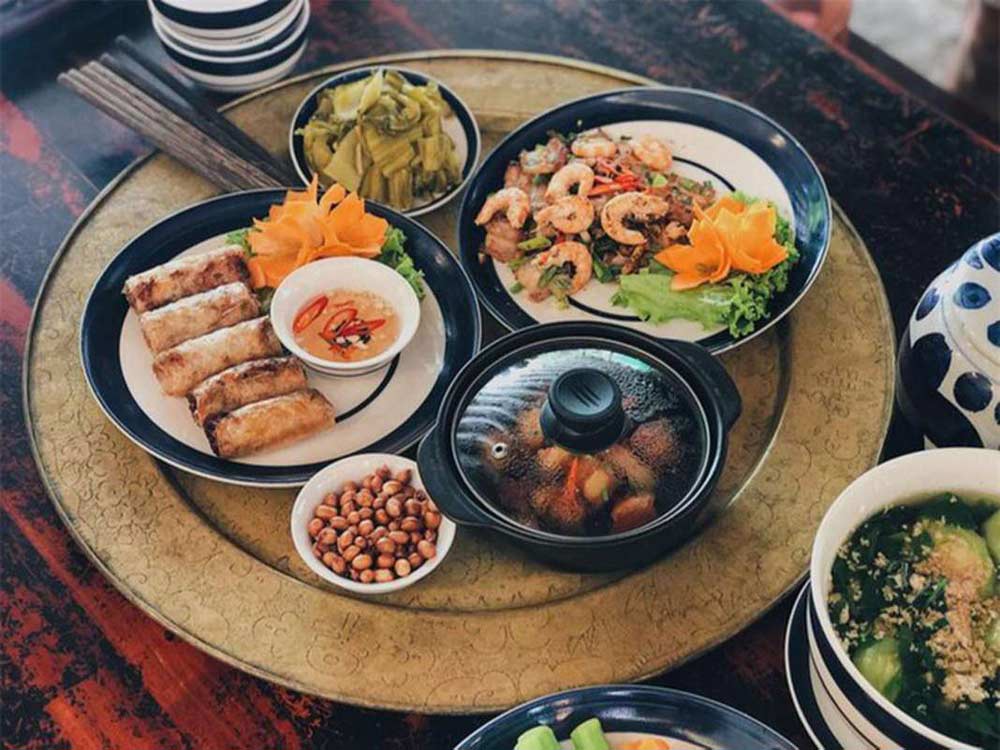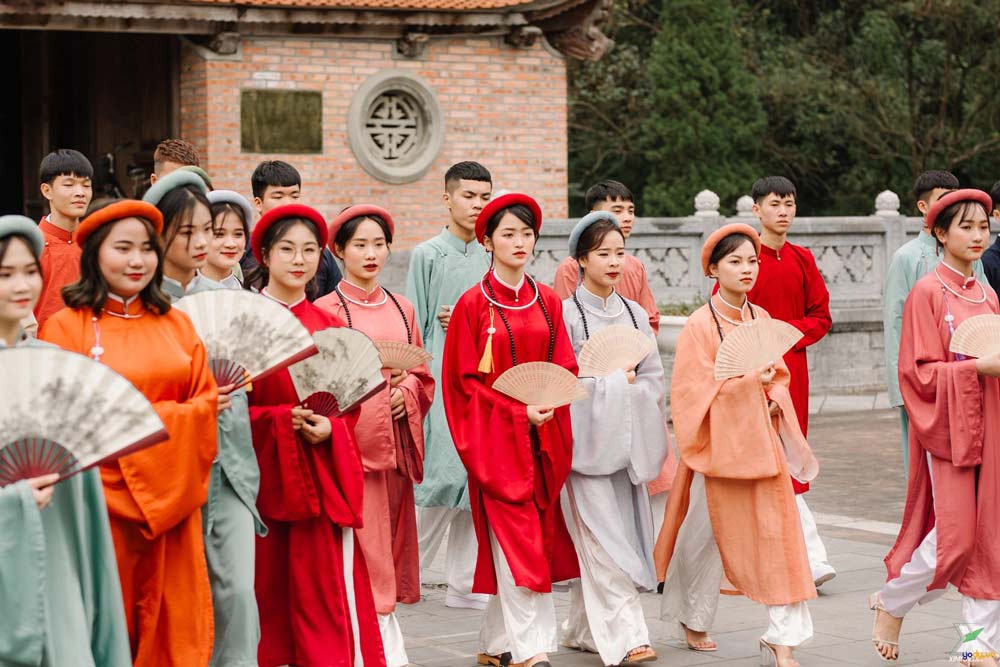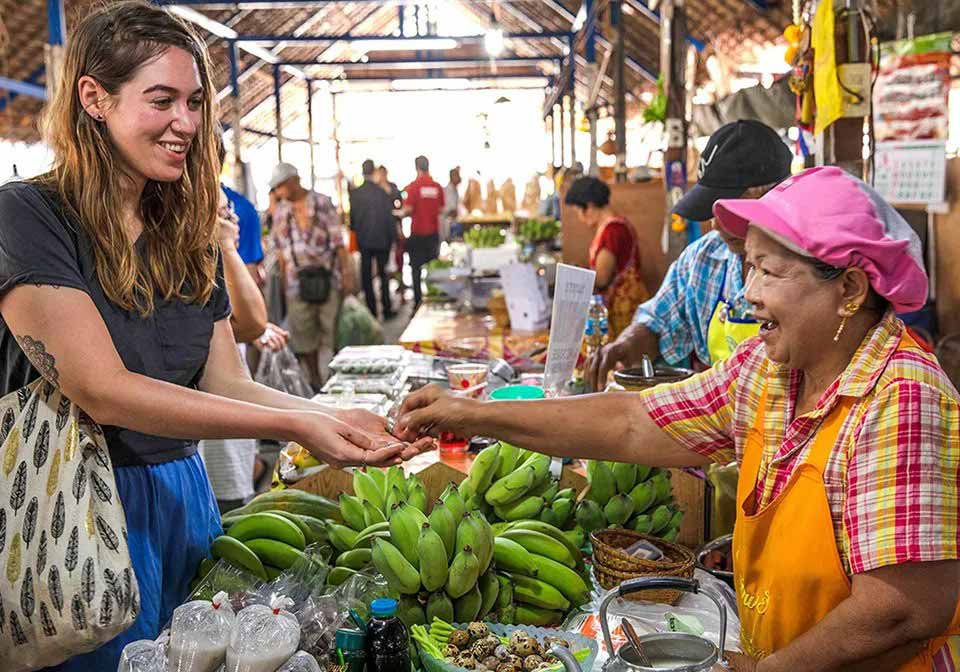Welcome to the enchanting world of Vietnam, a land where tradition and courtesy weave the fabric of daily life. For travelers eager to dive deep into the heart of this vibrant culture, understanding and respecting Vietnamese etiquette is the golden key to unlocking a more authentic and immersive experience. Imagine etiquette as the rhythm to which the heart of Vietnam beats; mastering it allows you to move in harmony with the local way of life, from the bustling streets of Hanoi to the serene rice fields of the countryside. It’s like learning the secret language of the land, where each gesture of respect and understanding opens doors to deeper connections with the people who call this beautiful country home. Embracing Vietnamese customs is not just about following rules; it's about showing appreciation for the rich tapestry of history and values that define Vietnam. As you prepare to journey through this captivating land, remember that a little understanding goes a long way in forging lasting friendships and creating unforgettable memories in the land of the ascending dragon.

At the heart of Vietnamese society lies a foundation built on enduring cultural values—respect for elders, the importance of community, and the pursuit of harmony. These pillars are like the bamboo that flourishes in Vietnam's landscape: flexible yet strong, bending in the wind but never breaking. Vietnamese etiquette, deeply rooted in these values, serves as the guidebook for navigating the social fabric of the country, ensuring that every interaction is laced with respect and understanding.
Respect for elders is paramount, akin to the reverence one would show a venerable banyan tree, standing tall and wise with the passage of time. It is expressed through language, gestures, and deference in decision-making, embodying the gratitude for the wisdom and sacrifices of previous generations. The community, meanwhile, is like a tightly woven net, supporting each individual yet strengthened by the collective. Every act of etiquette reinforces these bonds, ensuring that harmony prevails over discord.
In daily life, these principles of etiquette are not mere formalities but the essence of Vietnamese identity, coloring interactions with warmth and sincerity. Whether it's in the respectful bow to greet someone, the thoughtful offering of tea to a guest, or the careful avoidance of conflict, Vietnamese etiquette is a dance of dignity and grace. It's a dance that invites everyone to join, ensuring that the melody of tradition continues to resonate through the ages, making etiquette not just a practice but a celebration of Vietnamese culture itself.

In Vietnam, greeting someone is like presenting a gift; it’s about offering respect, warmth, and openness through simple yet meaningful gestures. The traditional bow, a slight nod of the head accompanied by a soft smile, serves as the universal sign of politeness, much like the gentle ripple caused by a pebble in a pond—subtle but significant. Addressing individuals with appropriate titles followed by their first name, rather than the surname, acts as a bridge of respect, acknowledging their status and relationship to you, similar to navigating a map with clear markers guiding the way.
The Vietnamese language, with its nuances and tones, offers a rich palette for polite communication. Integrating phrases like “Xin chào” (Hello) for greetings, “Cảm ơn” (Thank you) to express gratitude, and “Xin lỗi” (Sorry) for apologies, can turn brief encounters into moments of genuine connection, akin to stitching vibrant threads into the social fabric. These expressions, when used with a mindful awareness of body language—avoiding direct eye contact with elders out of respect, for instance—paint interactions with the hues of courtesy and reverence.
Understanding and practicing these nuances of greetings and communication in Vietnam can transform your journey, making each interaction a stepping stone to deeper cultural immersion. It's about more than just exchanging words; it's an exchange of cultural values, an opportunity to weave yourself momentarily into the everyday lives of the Vietnamese people. By approaching each greeting and conversation with respect and openness, travelers can unlock the doors to enriching experiences, discovering the beauty of Vietnam not just through its landscapes but through the warmth of its people.

Venturing into the culinary landscape of Vietnam is akin to entering a dance hall, where each movement and gesture at the table follows a rhythm of respect and communal joy. Vietnamese dining etiquette is the choreography of this dance, guiding interactions from chopstick maneuvers to the harmonious exchange between host and guest. Mastering chopstick etiquette, such as not pointing them at others or sticking them upright in your bowl (a symbol of bad luck), is like learning the basic steps, ensuring you move in sync with local customs.
At the heart of Vietnamese meals is the tradition of sharing, where dishes are placed centrally and everyone is invited to partake. This practice isn't just about food; it's a circle of inclusion, drawing everyone into a shared experience. Engaging in this tradition, trying local specialties, and expressing appreciation is like adding your own freestyle moves to the dance, enriching the communal atmosphere and showing reverence for the culinary artistry.
Vietnamese table manners extend beyond chopsticks and shared plates; they encompass a genuine engagement with the food and those around you. Offering food to others before serving yourself, waiting for elders to begin the meal, and sampling a bit of everything are like the etiquette of applause, acknowledging the chef's performance and the company shared.
Embracing these dining traditions allows travelers to fully immerse in the Vietnamese culinary scene, turning each meal into an opportunity for cultural connection and mutual appreciation. It's not just about eating; it's about participating in a ritual that feeds the soul as much as the body, making every meal a memorable part of your Vietnamese journey.

In Vietnam, dressing appropriately and adhering to expected public behaviors is akin to navigating the country's rich and varied landscape. Just as one would choose the right gear for traversing the bustling streets of Hanoi, the serene countryside, or the sacred quiet of a temple, selecting attire is about harmonizing with the setting. In temples and rural areas, modesty is key; think of it as wearing a cloak of respect, where covering shoulders and knees is akin to whispering in a library, a signal of reverence and mindfulness.
Urban areas offer a tapestry of modernity and tradition, where the dress code is more relaxed, yet still infused with an undercurrent of conservatism. Imagine your wardrobe as a palette, where blending in doesn't mean fading away but painting yourself into the vibrant city life with strokes of cultural sensitivity.
Public behavior, too, follows an unwritten code. Keeping noise levels to a harmonious hum respects the collective peace, akin to not overshadowing the melody in a symphony. Public displays of affection are like bold colors on a traditional canvas—used sparingly, so as not to disturb the balance. Sacred sites demand the utmost respect; it's like entering someone's home, where mindfulness and courtesy open the door to a deeper understanding and connection.
Navigating dress codes and public behavior in Vietnam isn't just about following rules; it's about engaging with the culture in a way that shows appreciation and respect. It's a dance of social etiquette, where every step taken with consideration strengthens the bridge of understanding between traveler and local, crafting an experience rich in mutual respect and cultural immersion.

In Vietnam, presenting a gift or being welcomed into a home is akin to being woven into the very fabric of someone's life. The etiquette of gift-giving here is not just about the item itself but the thoughtfulness and respect it symbolizes, much like choosing the perfect melody for a song that resonates with its listener. Appropriate gifts, such as fresh fruit, sweets, or tea, are like keys that unlock the doors of friendship and appreciation. Presenting these gifts with both hands amplifies the gesture, adding a harmony of respect to the exchange.
Stepping into a Vietnamese home, you enter a realm where traditional values and warmth fill the air like the aroma of a home-cooked meal. The act of removing your shoes before entering is not just a custom but a sign of leaving the outside world behind and stepping into a space of mutual respect and care. It's akin to being part of a family portrait, where every detail contributes to the overall picture of togetherness.
As a guest, partaking in offered food and drink is like adding your voice to the family's song, embracing their rhythm and making the experience a shared melody. It's an opportunity to not only savor the flavors of Vietnamese cuisine but to show appreciation for the hospitality and effort of your hosts.
Navigating the nuances of gift-giving and home visits in Vietnam is a journey into the heart of its culture, where every action and interaction is a step towards deeper connections. It's about more than just manners; it's a dance of cultural immersion, where every move is a gesture of respect and every moment shared is a note in the symphony of cross-cultural friendship.

In the vibrant tapestry of Vietnamese culture, temples stand as serene islands of tranquility, while markets bustle with the lively exchange of goods and greetings. Visiting these places is like stepping into two different rhythms of the same song, each requiring its own dance steps to match the beat. At temples, the dress code and conduct are your gestures of respect—like wearing a solemn mask in a sacred play. Modesty in attire, covering shoulders and knees, mirrors the reverence of the space, while silent or whispered conversations honor the sanctity akin to lowering the volume when a soft melody plays.
The market, on the other hand, is a stage for a more dynamic dance, where negotiation is part of the performance. It’s like a friendly duel of words and smiles, where respecting vendors is as crucial as the dance itself. Polite bargaining, acknowledging the value of goods with a smile or a nod, is the unwritten rule of engagement, much like knowing when to lead and when to follow in a dance. Remember, each transaction is not just an exchange of money for goods but a moment of human connection, a brief duet in the day’s chorus.
Whether you're navigating the quiet reverence of a temple or the lively aisles of a market, understanding and adapting to these special situations is key to harmonizing with the local culture. It's about playing your part with grace, whether in the solemnity of sacred sites or the spirited exchanges of the marketplace, ensuring your journey through Vietnam is both respectful and enriching. These experiences invite you to not just observe but participate in the rich cultural symphony of Vietnam, where every action and interaction contributes to the beautiful melody of exploration and understanding.
As our journey through the intricacies of Vietnamese etiquette comes to a close, it's clear that the path to truly experiencing the heart and soul of Vietnam is paved with understanding and respect. Just as a skilled artist uses their knowledge to enhance the depth and beauty of their work, travelers who take the time to learn about local customs and etiquette can transform their visit into a masterpiece of cultural immersion. Embracing these practices isn't just about following rules; it's about painting your travels with strokes of respect, creating a vibrant tableau that resonates with both the traveler and the local community.
We invite you to share the colors of your own journey by telling us about your experiences or tips related to navigating Vietnamese culture with grace. Your stories are the hues that add depth to the shared canvas of travel experiences.
For those eager to add more shades to their palette, we recommend diving into further readings and resources on Vietnamese culture and etiquette. These tools are like brushes that can help paint your adventure in even more vivid detail, ensuring every interaction is a stroke of understanding and respect.
In the end, the beauty of your travel experience in Vietnam is not just in the places you visit but in the connections you forge and the respect you show. It's a journey that, when approached with mindfulness and appreciation, becomes a masterpiece of memories that will color your heart for years to come.
Fascinated by the intricate tapestry of Vietnamese etiquette traditions? Delve deeper into the heart of Vietnam’s cultural heritage with our Essence Of Vietnam From South To North tour package, where each destination unfolds new insights and traditions, enriching your travel experience.
Explore the essence of Vietnam through our tailored tour packages. Each private tour is carefully designed to match your individual tastes, providing a unique and personal journey through Vietnam's secret wonders and cultural riches.